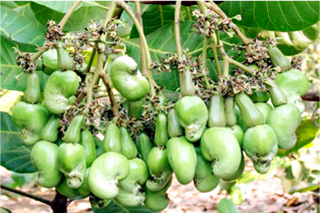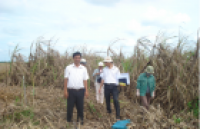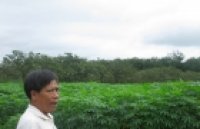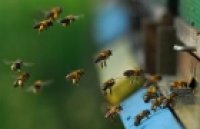| Genome-wide association studies identify OsWRKY53 as a key regulator of salt tolerance in rice |
|
Salinity stress progressively reduces plant growth and productivity, while plant has developed complex signaling pathways to confront salt stress. However, only a few genetic variants have been identified to mediate salt tolerance in the major crop rice, and the molecular mechanism remains poorly understood. Here, we identify ten candidate genes associated with salt-tolerance (ST) traits by performing a genome-wide association analysis in rice landraces. We characterize two ST-related genes, encoding transcriptional factor OsWRKY53 and Mitogen-activated protein Kinase Kinase OsMKK10.2, that mediate root Na+ flux and Na+ homeostasis. |
|
Jun Yu, Chengsong Zhu, Wei Xuan, Hongzhou An, Yunlu Tian, Baoxiang Wang, Wenchao Chi, Gaoming Chen, Yuwei Ge, Jin Li, Zhaoyang Dai, Yan Liu, Zhiguang Sun, Dayong Xu, Chunming Wang, Jianmin Wan Nat Commun.; 2023 Jun 15; 14(1):3550. doi: 10.1038/s41467-023-39167-0. AbstractSalinity stress progressively reduces plant growth and productivity, while plant has developed complex signaling pathways to confront salt stress. However, only a few genetic variants have been identified to mediate salt tolerance in the major crop rice, and the molecular mechanism remains poorly understood. Here, we identify ten candidate genes associated with salt-tolerance (ST) traits by performing a genome-wide association analysis in rice landraces. We characterize two ST-related genes, encoding transcriptional factor OsWRKY53 and Mitogen-activated protein Kinase Kinase OsMKK10.2, that mediate root Na+ flux and Na+ homeostasis. We further find that OsWRKY53 acts as a negative modulator regulating expression of OsMKK10.2 in promoting ion homeostasis. Furthermore, OsWRKY53 trans-represses OsHKT1;5 (high-affinity K+ transporter 1;5), encoding a sodium transport protein in roots. We show that the OsWRKY53-OsMKK10.2 and OsWRKY53-OsHKT1;5 module coordinate defenses against ionic stress. The results shed light on the regulatory mechanisms underlying plant salt tolerance.
See https://pubmed.ncbi.nlm.nih.gov/37321989/
Fig. 1 GWAS for the eight salt-tolerance traits. A Salt response of representative rice varieties in the GWAS. – and + represented control and 140 mM NaCl treatment, respectively. B Frequency distribution of water content under salt treated. Arrows represented control accessions, and Nona Bokra was tolerant to salt stress and Koshihikari was a salt sensitive variety. C Frequency distribution of shoot Na+ content under salt treated. D Population structure. The colored subsections within each vertical bar indicated membership coefficient (Q) of the accession to different clusters. E Neighbor-joining clustering of landraces based on genetic distance. The scale bar showed substitutions per site. The colors of the bar and the tree branch indicated the five groups identified through the STRUCTURE program. F Principal components analysis for the 268 rice varieties based on whole-genome sequence data. PC1, PC2, and PC3 indicated eigenvectors of top principal components 1, 2 and 3, respectively. G Overview of MLM with OsWRKY53 highlighted in red. Scale: −log10 of P value of markers. Manhattan plots for WC. H Overview of MLM with OsMKK10.2 highlighted in red. Scale: −log10 of P value of markers. Manhattan plots for SFW. Mixed linear model was used to calculate P value. |
|
|
|
[ Tin tức liên quan ]___________________________________________________
|


 Curently online :
Curently online :
 Total visitors :
Total visitors :
(255).png)


